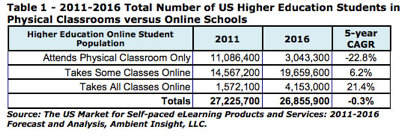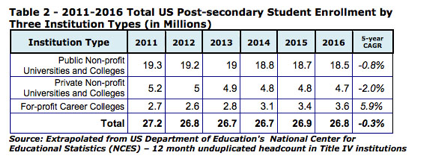Prediction #2: Universities are expanding their marketing to broader geographic areas.
We notice a tendency among our clients to broaden their geographic recruiting area. This broadening is driven by three distinct factors:
- Universities want to create a more diverse student body across the United States (and worldwide) to increase attractiveness and support higher rankings.
- Colleges and universities based in geographic areas with less favorable demographic trends, such as the Midwest, need to look for additional students elsewhere
- Beyond the currently well-known national research universities, a number of universities are building national marketing programs attracting more students with online and hybrid programs. A smaller number of universities are undertaking steps to establish regional campuses.
In particular in professional graduate education, such as business, finance and law, bigger university brands will be able to compete more effectively than many small regional schools. In contrast to the current campus based education models, where education capacity is largely fixed, in the digital teaching world, scale will pay off. For example, universities have a fixed number of annual seats available for admission; more applications generally mean a lower admission rate, not more students on campus. In digital course delivery, an additional 100 or 1000 students can be admitted and enrolled. The university can deliver the course without significant additional resource use.
If you believe the direction of Ambient Insights projections in Table 1, the mix of education delivery will change significantly. Hybrid delivery of physical and online will be standard. Exclusive use of online courses will be bigger than pure classroom instructions.
 In general, competition will further intensify as new college competitors enter regional markets, previously dominated by current geographic incumbents. Furthermore, the for-profit-sector is also expected to continue to grow (see Table 2). If nothing else, non-profit and public universities know that for-profit universities have a core competency in marketing their educational services.
In general, competition will further intensify as new college competitors enter regional markets, previously dominated by current geographic incumbents. Furthermore, the for-profit-sector is also expected to continue to grow (see Table 2). If nothing else, non-profit and public universities know that for-profit universities have a core competency in marketing their educational services.

Despite their currently tainted reputation, I believe that the for-profit sector will continue to make inroads across all educational fields and offer high quality and competitive programs. As mentioned previously, digital teaching offers tremendous scale advantages. So smaller colleges and universities will either partner to deliver digital content or they will lose out to more sophisticated and more compelling competitors, many of which will be for-profit companies.
Go to prediction # ________

